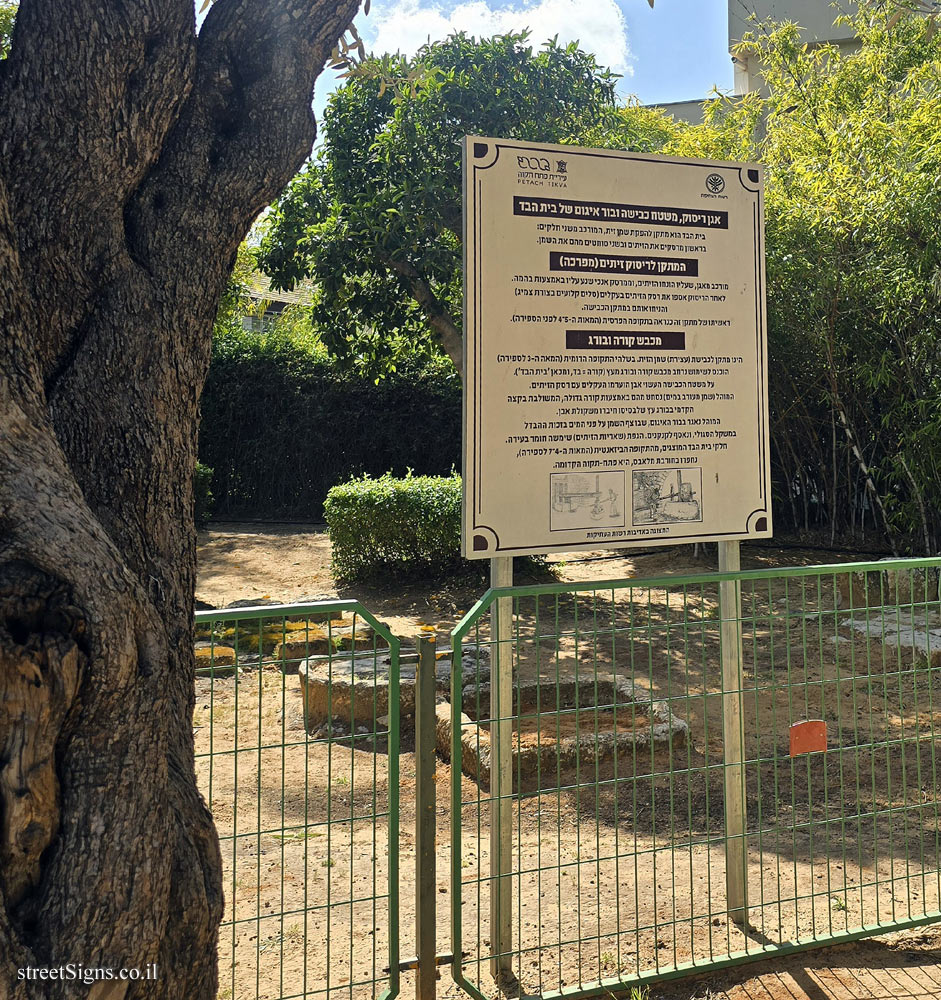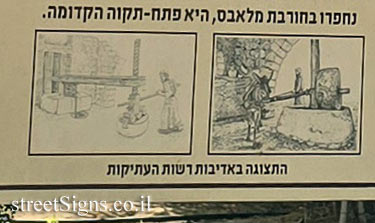An ancient Olive press located in Yad Lebanim Park in Petah Tikva.
The remains of the Olive press were photographed on the same day by the same photographer
 Click for a larger image
Click for a larger image The illustrations at the bottom of the sign are shown here at magnification
 Click for a larger image Translation of the text on the sign
Click for a larger image Translation of the text on the sign:
[Symbol of the Antiquities Authority]
[Symbol of Petah Tikva Municipality]
Crushing basin, pressing surface and pooling pit of the Olive press Beit Habed is a facility for producing olive oil, which consists of two parts: in the first, the olives are crushed and in the second, the oil is squeezed from them.
The device for crushing olives Consists of a basin, on which the olives were placed, and a vertical crusher moved on it by means of an animal. After crushing, collect the olive paste in ekelim (braided tire-shaped baskets) and place them in the pressing device.
The origin of this facility is probably in the Persian period (4th-5th centuries BC).
Beam and screw press Is a facility for pressing (stopping) the olive oil. At the end of the Roman period (3rd century AD) a wooden beam and screw press was put into widespread use (beam = cloth, hence the ’cloth house’ [in Hebrew]).
On the pressing surface made of stone, the ekels were piled with the olive paste.
The sap (oil mixed with water) was squeezed from them using a large beam, which was integrated at the front end with a wooden screw, at the base of which they attached a stone weight.
The sap is stored in the collection tank, where the oil floats on the surface of the water thanks to the difference in specific gravity, and is collected in jugs. The Orujo (remains of the olives) was used as fuel.
The parts of the Olive press shown, from the Byzantine period (4th-7th centuries AD), were excavated in the ruins of Malabes, which is the ancient Petah-Tekvah.
[illustrations]
The display is courtesy of the Antiquities Authority
Learn about:

 Click for a larger image
Click for a larger image  Click for a larger image
Click for a larger image